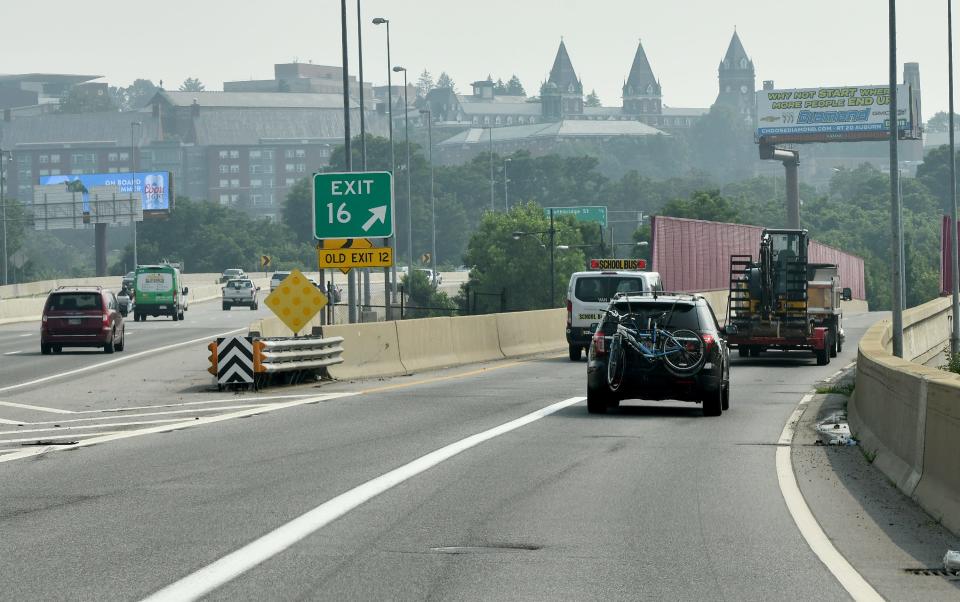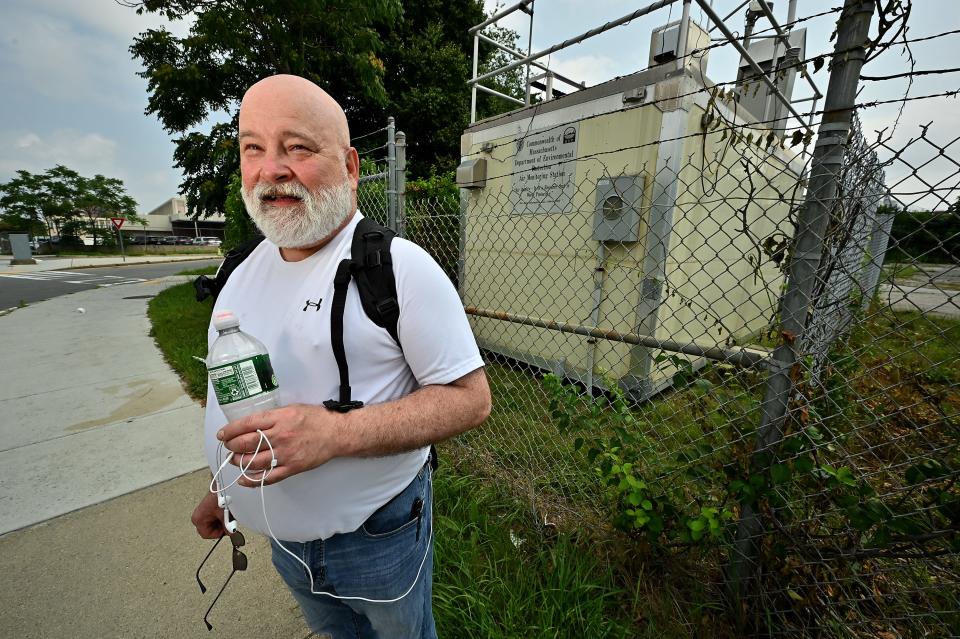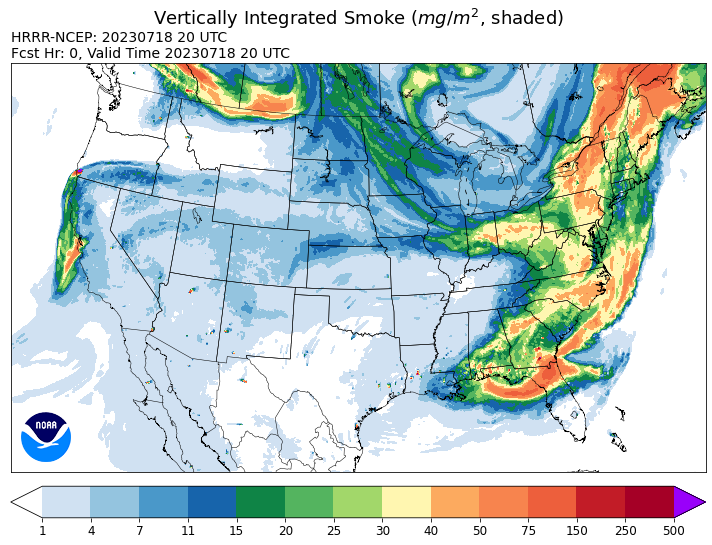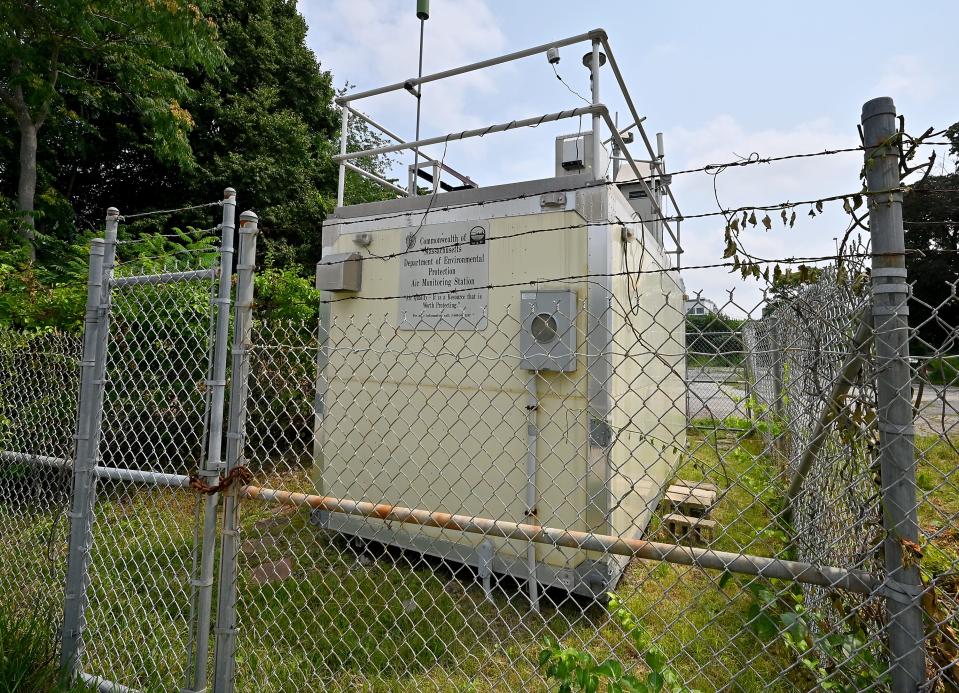Have you seen the air-quality monitors in Worcester? Many haven't. Here's how they work.
WORCESTER – It's easy to miss it, if you’re not paying attention.
A big metal box the size of a large storage shed with instruments sticking out is tucked behind a fence with weeds popping up around it. That box is located on a stretch of Summer Street downtown, across from St. Vincent Hospital and near the on-ramp to Interstate 290 West.
It’s not a place with a lot of walkers as cars zoom past, but if you happen to see this box, its size will grab your attention. So will a sign plastered on the front that says, "Commonwealth of Massachusetts Department of Environmental Protection Air Monitoring Station."
Underneath those words is a quote: “Air Quality – It is a Resource that is Worth Protecting.”

Worcester has two of these AQI monitors
There are two of these walk-in monitors in Worcester that are owned and operated by the state Department of Environmental Protection. The other is in a commercial area near Worcester Regional Airport and they’re particularly relevant this week because air currents continue to bring wildfire smoke from Canada into New England.
Particle matter is in the haze, making it more difficult for some with respiratory problems to breathe. Worcester County was under an air-quality alert Monday, Tuesday and Wednesday because of the smoke. There is real potential for more alerts in the weeks – and possibly months – ahead as millions of Canadian acres continue to burn out of control due to dried-out vegetation linked to climate change that is a constant source of fuel for the fires.
MassAir, the online site operated by the state DEP that displays readings of the state’s 23 ambient air-quality monitors, including the two in Worcester, showed readings in the city Wednesday morning of “moderate” on Summer Street and “good” at the airport.

Stumbled upon the big box on Summer Street
Bob Irish would have walked past the monitor if it wasn't pointed out to him. The Boylston-bred Irish was in Worcester for a visit, lugging a stuffed backpack and a bottled water on a hot, humid Tuesday, when he gazed at the monitor and started to think about what it does.
“You don’t necessarily need more air-quality stations. You need more trees,” said Irish, who has a college degree in urban forestry.
Trees suck in carbon dioxide, a major contributor to climate change that is heating up the planet, so Irish wants to see more of them, especially in urban areas like the one around the monitor on Summer Street.
Holy smoke! It's the hazy shade of summer. Worcester County is under an air quality alert from noon until midnight today, as smoke from Canadian wildfires is expected to impact Central and Western Massachusetts. @telegramdotcom @TweetWorcester pic.twitter.com/3uN3PFilgy
— Allan Jung 🏳️🌈 (@ajungphoto1) July 17, 2023
Markey wants more monitors for Environmental Justice Communities
U.S. Sen. Ed Markey, D-Massachusetts, refiled a bill last month that calls for $55 million over five years to update and expand tools used by the U.S. Environmental Protection Agency in order to monitor air quality. The goal is to better measure and manage unhealthy levels of air pollution across the country, particularly in environmental justice communities.
Roughly 90% of Worcester falls under this state designation, which Massachusetts defines as having a preponderance of low-income residents of color with varying levels of English-speaking proficiency.
A press release from Markey’s office at the time of the refiling said those communities are likely to be disproportionally harmed by air pollution. It noted current monitors fail to capture block-by-block differences and hide pollution burdens in environmental justice communities that are 50% more likely to be affected by poor air quality.
Other points raised by Markey:
Updated monitors found air pollution can be up to eight times worse on one end of a city block than another.
Negative health impacts include more frequent asthma attacks, heart attacks, strokes, premature births and early death.
A Worcester City Hall spokesman said officials were not available to comment on the monitors and whether more are needed in the city's underserved neighborhoods.

Way ahead of the curve
Worcester’s number of monitors appear to be ahead of the curve, relatively speaking, compared to other U.S. cities.
New York City, with a population approaching 9 million, has only four or five monitors, said Faye McNeill, a professor in the department of earth and environmental sciences at Columbia University.
McNeill, who has asthma and carries an inhaler when New York City is under air-quality alerts from Canadian wildfire smoke, thinks the current system in Massachusetts is adequate for collecting regional data. But to get into the neighborhoods and acquire more details that shows how air pollution is affecting underserved neighborhoods, McNeill believes lower-cost sensor networks could do the trick.
Currently, nonprofits and researchers use those networks and McNeill believes state departments of environmental protection should take them on to make the information more accessible to all, especially in neighborhoods where residents suffer disproportionately from poor air quality.
How Worcester's air quality monitors work

The state DEP provided an explanation of what's going on inside those big boxes:
They draw a continuous stream of air that travels into sampling lines through rooftop probes.
The air goes to analyzers designed to continuously measure a specific pollutant.
The measurement method is different for different pollutants, but all the analyzers in Worcester can generally be described as using spectroscopy techniques to measure levels of pollutants.
All measurements collected in Worcester are continuous and report measurements as one-minute averages.
The state DEP also operates noncontinuous analyzers in other areas of its network. Those analyzers collect physical samples from materials like a filter, cartridge or canister and are picked up usually once a week and sent to a laboratory for analysis. Typically, the noncontinuous analyzers collect 24-hour samples every three to six days.
The airport monitor was set up in 1979 and measures ozone and common weather elements, like temperature and humidity.
The monitor on Summer Street was erected in 2004 and replaced the previous monitor downtown. It continuously monitors a variety of elements including carbon monoxide, sulfur dioxide and nitrogen dioxide. It also measures fine particles and particulate matter and includes a continuous atmospheric radiation sampler.
Air-quality monitors and trees, a combination to fight climate crisis
Irish spent more time looking at the Summer Street monitor than he ever imagined. He sees the benefit of Markey’s plan to pump millions into improved air-quality monitoring, especially in disadvantaged communities suffering with dangerous health impacts from poor air quality.
But as valuable as the monitors are, Irish believes trees are the way to go to clean up the air and fight climate change.
"Two (monitors) in the city, you got one at low elevation, one at a higher elevation, you're getting a pretty good read,” Irish said. “So you don’t necessarily need more (air monitor) stations as much as you need more trees and more green space.”
The Telegram & Gazette is investigating the effects of a rapidly heating planet on people who live in our city. Follow along with "City on Fire" as we report the struggle with summer temperatures, even in New England. This is part of the USA TODAY project Perilous Course. Contact reporter Henry Schwan to be included in a story if you have been affected by heat: expense of air conditioning or lack of it, health risks, less access to green space, concern about pets and animals in the summer conditions, worry about an older loved one, etc.
Contact Henry Schwan at henry.schwan@telegram.com. Follow him on Twitter: @henrytelegram.
This article originally appeared on Telegram & Gazette: Air-quality monitors track pollutants, measure quality in Worcester

